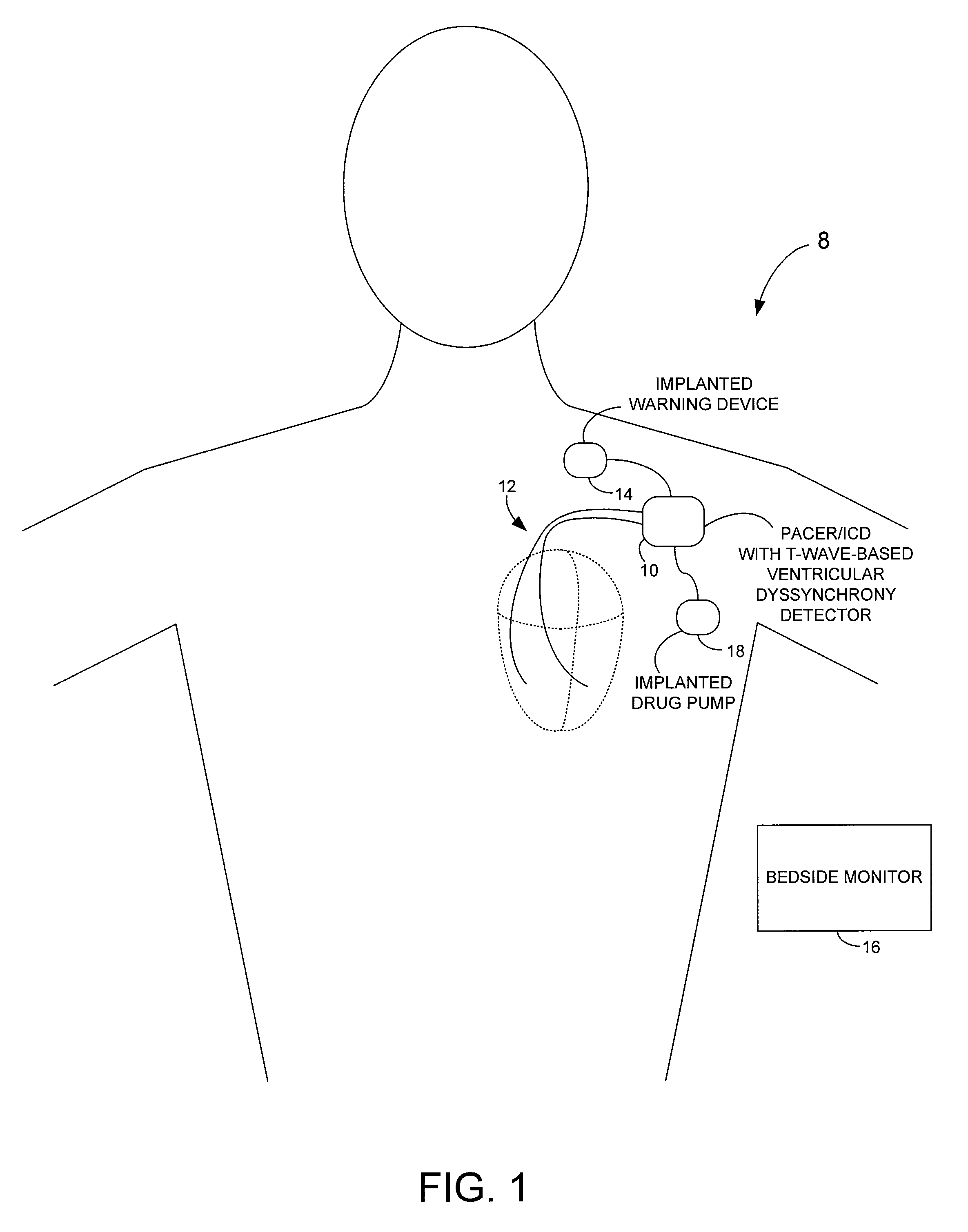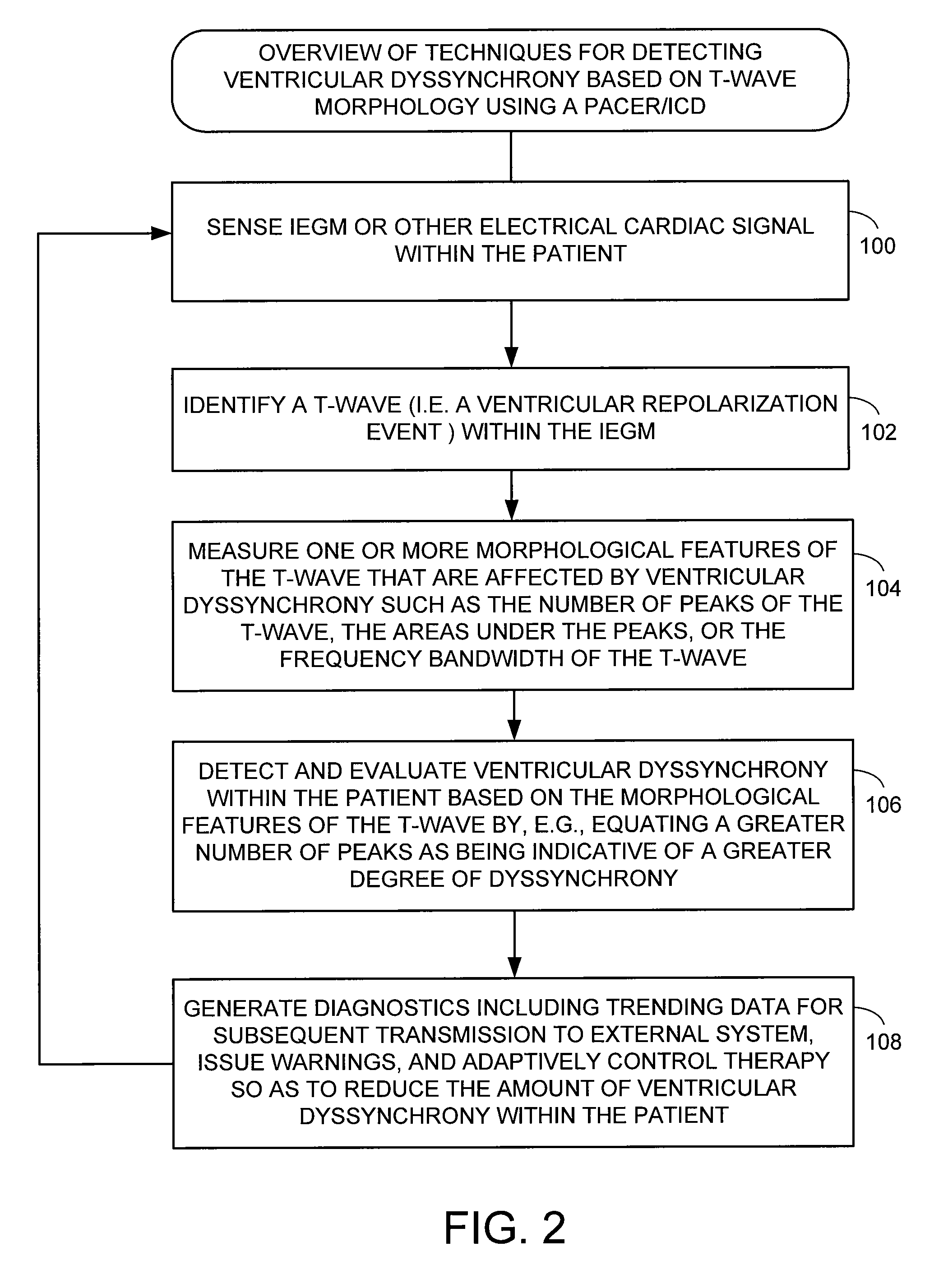Systems and methods for use by an implantable medical device for evaluating ventricular dyssynchrony based on T-wave morphology
a medical device and ventricular dyssynchrony technology, applied in the field of implantable medical devices, can solve the problems of intraventricular dyssynchrony, increased severity of dyssynchrony, intraventricular dyssynchrony, etc., and achieve the effect of reducing dyssynchrony and simple procedur
- Summary
- Abstract
- Description
- Claims
- Application Information
AI Technical Summary
Benefits of technology
Problems solved by technology
Method used
Image
Examples
Embodiment Construction
[0035]The following description includes the best mode presently contemplated for practicing the invention. This description is not to be taken in a limiting sense but is made merely to describe general principles of the invention. The scope of the invention should be ascertained with reference to the issued claims. In the description of the invention that follows, like numerals or reference designators are used to refer to like parts or elements throughout.
Overview of Implantable Medical System
[0036]FIG. 1 illustrates an implantable medical system 8 capable of detecting parameters representative of ventricular dyssynchrony based on T-wave measurements and also for controlling delivery of appropriate therapy in response thereto. To this end, a pacer / ICD 10 (or other implantable medical device) receives IEGM signals or other electrical cardiac signals from a set of cardiac pacing / sensing leads 12. In FIG. 1, only two leads are shown. A more complete set of leads is illustrated in FIG...
PUM
 Login to View More
Login to View More Abstract
Description
Claims
Application Information
 Login to View More
Login to View More - R&D
- Intellectual Property
- Life Sciences
- Materials
- Tech Scout
- Unparalleled Data Quality
- Higher Quality Content
- 60% Fewer Hallucinations
Browse by: Latest US Patents, China's latest patents, Technical Efficacy Thesaurus, Application Domain, Technology Topic, Popular Technical Reports.
© 2025 PatSnap. All rights reserved.Legal|Privacy policy|Modern Slavery Act Transparency Statement|Sitemap|About US| Contact US: help@patsnap.com



